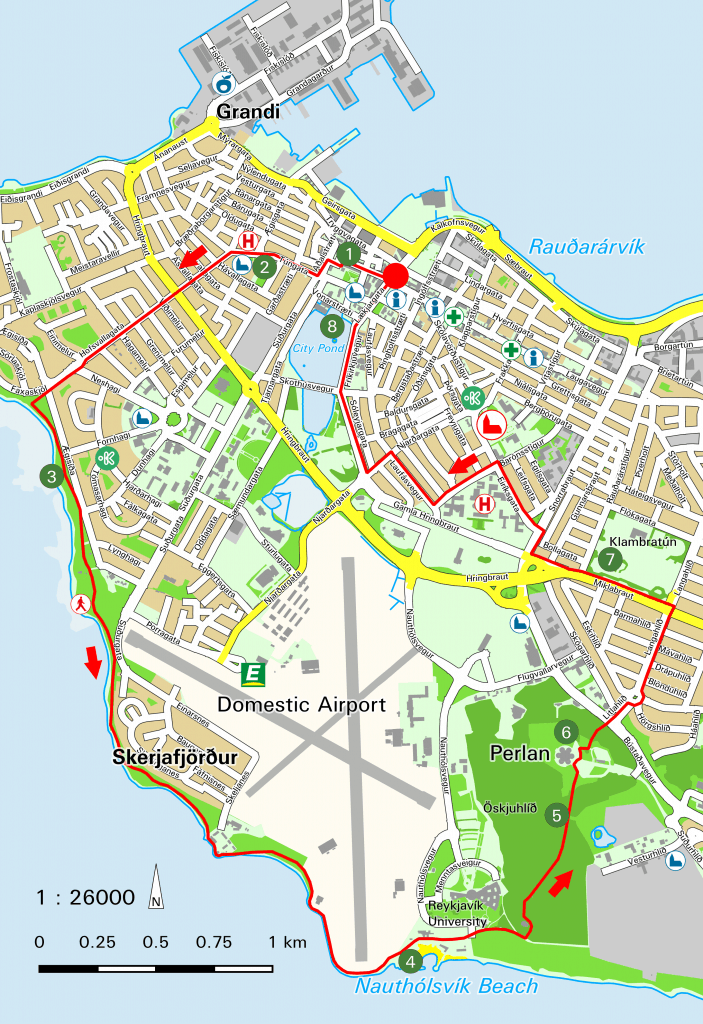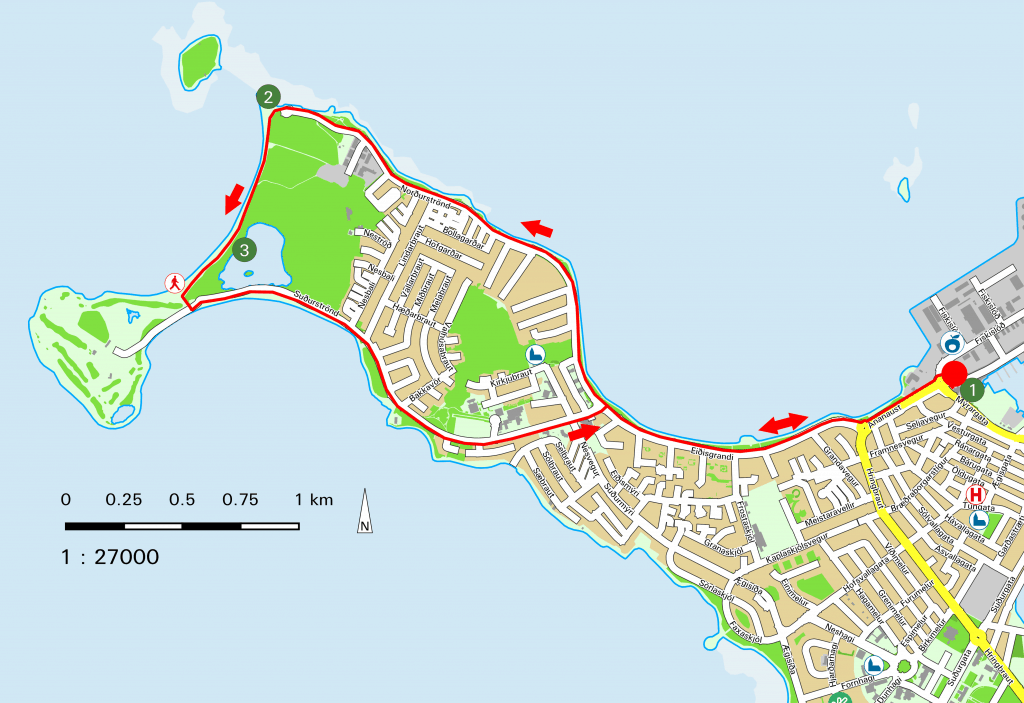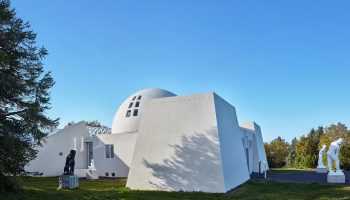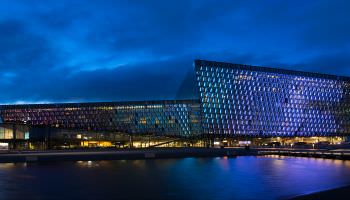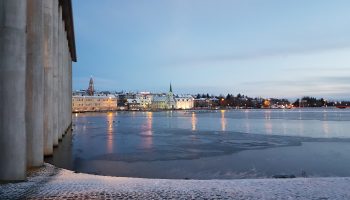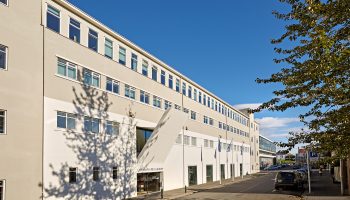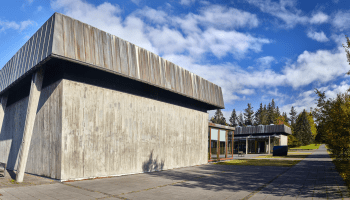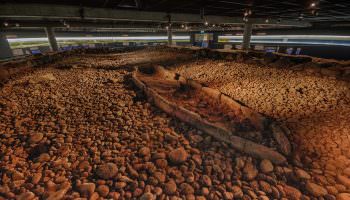Discovering downtown Reykjavík and its surroundings is best done on foot or bike. This slow form of travel gives you a better exposure to life in the city and what it has to offer. Walking the streets of the city allows for surprises of tucked-away gems and provides an intimacy with the city as you interact with what you experience. Traffic stress is not your concern as you discover Reykjavík on foot. These walking paths are also mostly bike-friendly, so if you prefer to bike around the city, these trails are excellent paths of discovery.
Reykjavík CLASSIC
(2 – 3 hrs. / 2.4 km.)
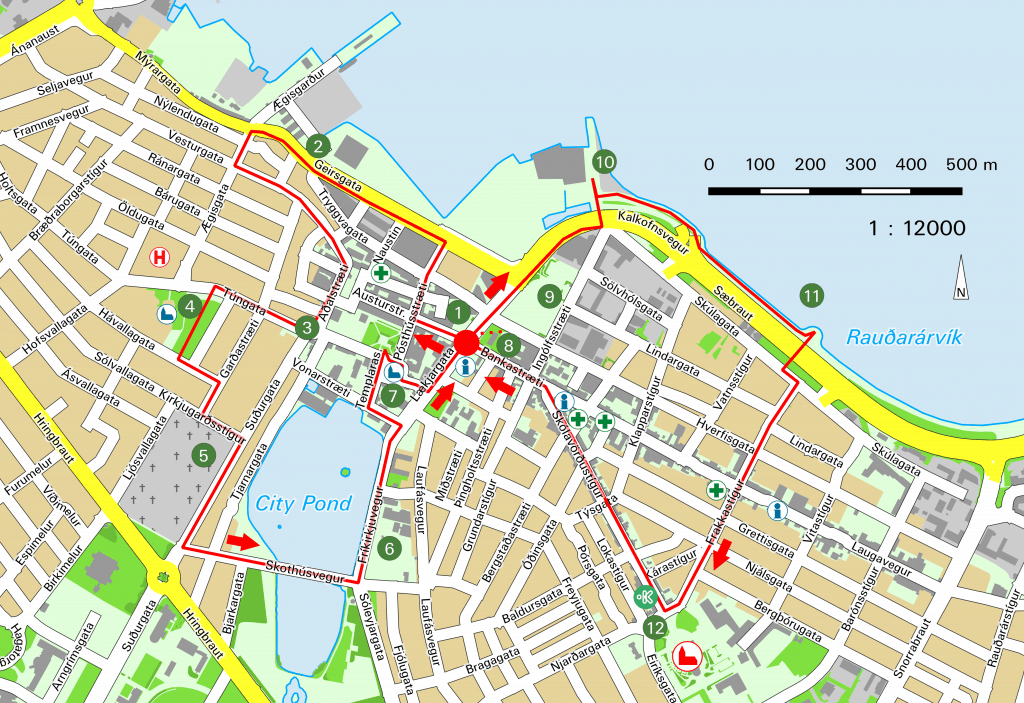
Starting at Lækjartorg square (1), follow Austurstræti to the corner of Pósthússtræti. Take a right turn into Pósthússtræti and continue onwards towards the sea and Geirsgata. Once at the harbour, you will find an old steam locomotive which was used to transport building materials for the building of the harbour. Enjoy the exhibition and sculptures on display and amble along the shoreline towards the Old Harbour Area (2). A cluster of beautifully restored buildings housing restaurants and souvenir shops line the harbour. Walk along until you get to Ægisgarður and the whale watching huts. Take a left up Ægisgata until you get to Vesturgata. Turn left and continue until you get on Aðalstræti, the oldest street in Reykjavík and at the end of the street you will see The Settlement Exhibition (3).
Aðalstræti was the first, and in fact, the only street in the early days of Reykjavik. This is the oldest part of the city and here you can find some of its oldest houses and trees. On the right side of the street is an old well which used to be one of the city’s main water sources until the establishment of the Water Works in 1909. The tiny square at the end of the road used to be a cemetery and you can still see some old gravestones there. Turn right and follow Túngata up to the Catholic Church (4) at Landakot. Walk through the grounds of the church until you reach Hávallagata. Turn left and proceed to Garðastræti where you take a right to Kirkjustígur. Enjoy the old cemetery (5), filled with beautiful sculptures, gravestones and aged trees.
Leaving the cemetery, turn right at Suðurgata to Skothúsvegur and enjoy a little detour around the City Pond. Continue along Fríkirkjuvegur and make a stop at the National Art Gallery (6) which is well worth seeing. Proceed towards the City Hall at the pond where you find in the exhibition hall a huge 3D map of Iceland. (Open to visitors on weekdays 08:30–16:30). From there walk up Templarasund to the Alþingi Parliament House (7) and the Cathedral.
From the church, walk onwards to Lækjargata, cross the road and continue in the direction of the Lækjartorg square. Pass the giant outdoor chess board, the statue Vatsnberinn and Bernhöftstorfan (8) , a set of renovated buildings which house gourmet restaurants. Proceed to the statue of Ingólfur Arnarson, the first settler in Iceland, on the top of Arnarhóll (9) . End the tour at Harpa Concert Hall (10) or continue along the shoreline to the impressive sculpture called Sólfarið- Sea Voyager (11). After taking your selfie with the Sea Voyager, walk up Frakkastígur to Hallgrímskirkja (12) at the top of the hill. Enjoy this austere cathedral before walking down Skólavörðustígur into Bankastræti and back to Lækjartorg square.
Reykjavík NATURE
(2 – 4 hrs. / 9.3 km.)
Start your walk at Ingólfstorg square (1) on Aðalstræti. Walk along the oldest street in Reykjavík until you get to the square on the corner. Turn right up Túngata and follow the road past the Landakot Catholic Church (2) down along Hofsvallagata until you get to the coast at Ægisiða (3). Turn left and follow the path along the shoreline past the old fishing huts and various other reminders of the city’s fishing heritage.
Continue along the walking path past the domestic airport all the way to Nauthólsvík (4), a beautiful little beach with white sand where you can bathe in the heated seawater, or maybe, if you are adventurous, paddle out into the sunset on a kayak. The return takes you past the Reykjavík University up the Öskuhlið hill (5), which played an important role during the Second World War. The British Army used it as a military location. Today, this tree-lined hill has all the delights of a forest. It offers excellent walking paths and resting areas. Among the trees you can still find traces of the army “settlement”; such as shelters and trenches. Afterwards, you can treat yourself to some refreshments at Perlan (6) and take a look at the city from the view point at the top.
From Perlan, walk through the forest to Bústaðarvegur. Cross the road and go down on Litlahlið until you see a roundabout and there continue on Langahlið all the way to the traffic lights on Miklabraut. After crossing the street, turn left and walk near the park Klambratún (7) all the way to Snorrabraut. Turn right, cross the street and go up on Eiríksgata. Take a left on Barónsstígur until you get to Laufásvegur and walk towards Njarðargata. Go down towards Sóleyjargata, turn right towards the park and cross it until you reach the City Pond (8) and go back to the city centre at Lækjartorg square.
Reykjavík COAST
(1,5 – 3 hrs / 8.2 km.)
This walk starts at the traffic circle near the Saga Museum (1) on Ánanaust street in the Grandi area. This part of the route is wheelchair-friendly and has also a bike lane in some parts. Follow the walking path along the seaside all the way to the Grótta Lighthouse viewpoint (2). From here, you have the option to continue all the way to the lighthouse. Just be aware of the tide schedule. At the lighthouse enjoy the wide open ocean of Faxaflói Bay. Following the path along the seashore, you pass a pond (3) with a vibrant bird population. This path leads to the south side of the peninsula. Continue onto Suðurströnd past a small boat harbour and some impressive villas on the coast. The panoramic views are spectacular on this walk. The path leads you back down to the sea on the north side. Follow the path back to the Saga Museum.
